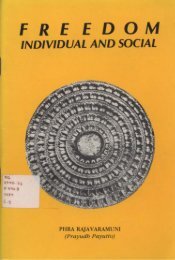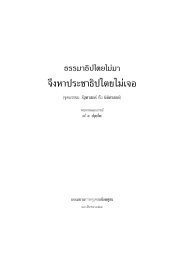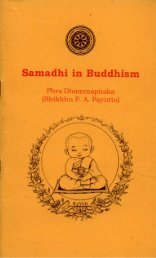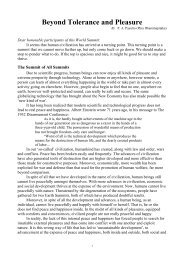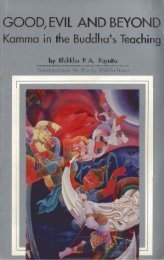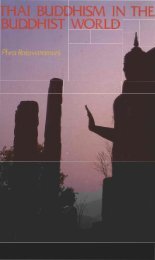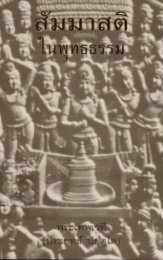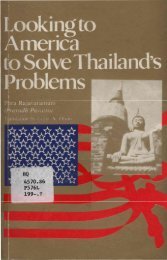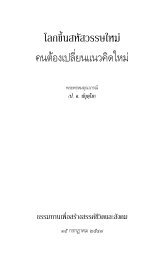The Iconography of Nepalese Buddhism
You also want an ePaper? Increase the reach of your titles
YUMPU automatically turns print PDFs into web optimized ePapers that Google loves.
Buddha Shakyamuni realized. Later on in the Vajrayana tradition<br />
also, the images <strong>of</strong> the Gurus were used to visualize to<br />
actualize the mind <strong>of</strong> Buddha.<br />
Some Gurus are also considered to be the emanated<br />
bodies i.e. reincarnated Nirmanakaya <strong>of</strong> some Buddhas and<br />
Bodhisattvas like Amitabha, Manjusree or Avalokiteshvara.<br />
B.3 Buddhas<br />
In Vajrayana tradition all the Buddhas are called Gurus.<br />
However especially five transcendental Buddhas (skt.<br />
ancabuddha) who represent the essence <strong>of</strong> five primordial<br />
defilements such as lust, hatred, delusion, pride and jealousy<br />
are mainly dealt with here. When one realizes the essence <strong>of</strong><br />
these five delusions one achieves ‘five wisdom’. e essence<br />
<strong>of</strong> lust is symbolized by Buddha Amitabha and is known as<br />
discriminating wisdom. e essence <strong>of</strong> delusion (skt. moha)<br />
is symbolized by Buddha Vairocana and is known as all<br />
pervasive wisdom. e essence <strong>of</strong> anger is symbolized by<br />
Buddha Akshobhya and is called Mirror-like wisdom. e<br />
essence <strong>of</strong> pride is symbolized by Buddha Ratna Sambhava<br />
and is known as Wisdom <strong>of</strong> Equality. e essence <strong>of</strong> jealousy<br />
is symbolized by Buddha Amoghsiddhi and is known as<br />
all accomplishing wisdom. us primordial purity <strong>of</strong> these<br />
five defilements which obscure our mind is represented by<br />
Pancabuddha.<br />
35



